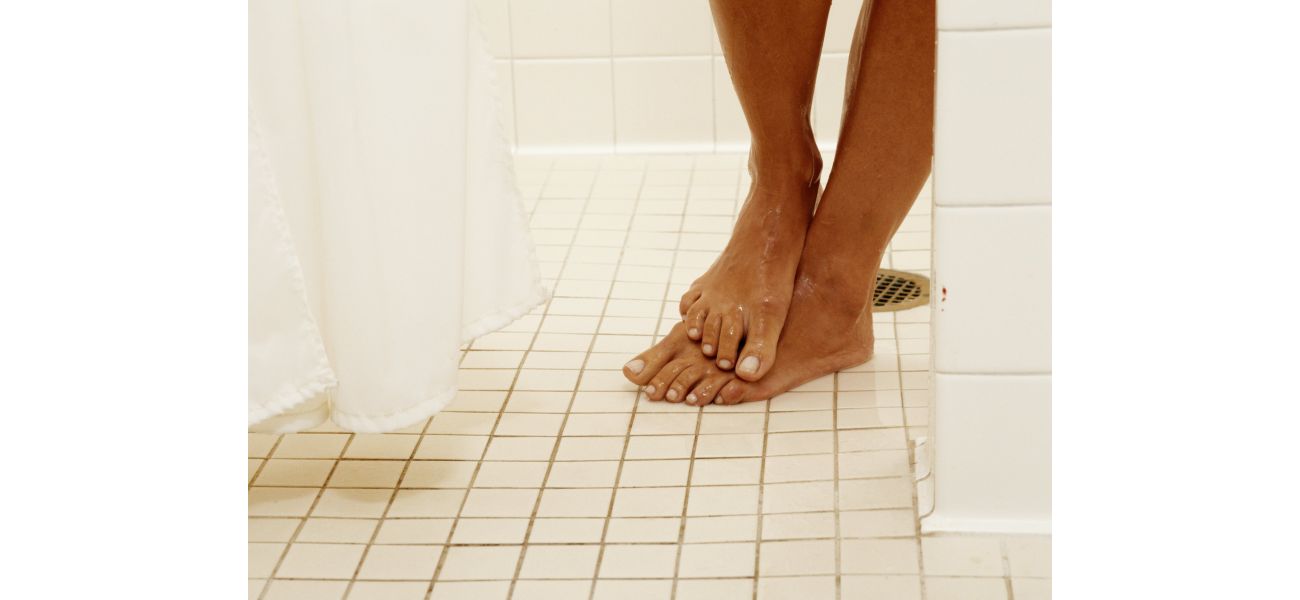Think twice before peeing in the shower due to a concerning side effect.
Next time, remember to use the restroom.
October 15th 2024.

Ladies, have you ever found yourself wondering if peeing in the shower is a normal thing to do or not? Well, opinions on this vary greatly. Some people believe it's a completely acceptable practice, while others cringe at the thought. And for those who do pee in the shower, they may argue that it's environmentally friendly and can save a significant amount of water each year. But it turns out, for women, this habit may have some adverse effects.
According to a doctor, not only is it unhygienic, but it can also lead to pelvic floor problems for those with vaginas. In addition, the sound of running water can become associated with the need to pee, causing frequent trips to the bathroom. A Texas-based obstetrician gynecologist, Dr. Emma Qureshey, shared this information on TikTok and her video has gone viral with over 700,000 views and hundreds of comments from shocked viewers.
One viewer commented, "Wow, you learn something new every day!" while another said, "Sometimes I feel like I'm doing everything wrong." Another person added, "Well, shoot! You mean to tell me that's why my pelvic floor is done?" This claim is not new, as another physical therapist also shared a similar message on TikTok, explaining that the sound of running water can create a mental association with peeing.
Although urinating in the shower is generally not considered harmful, it may cause issues if it becomes a regular habit. BMS Menopause Specialist and GP partner Dr. Deepali Misra-Sharp also acknowledges that there may be concerns related to urinating around running water or in the shower, especially if it becomes a frequent occurrence.
She explains that urinating in response to the sound of running water can condition the bladder to feel the need to pee whenever water is heard. This can lead to problems such as urinary urgency or leakage, especially for those who are already prone to bladder issues. Additionally, standing while peeing can make it harder to fully empty the bladder, which can contribute to pelvic floor dysfunction and urinary problems.
Dr. Misra-Sharp recommends practicing pelvic floor exercises regularly, as it can help prevent and improve symptoms of pelvic floor dysfunction. She shares some tips on how to exercise your pelvic muscles, such as sitting on a chair or toilet with your knees slightly apart and squeezing and lifting your pelvic floor muscles as if trying to hold in your pee. She also advises repeating this exercise several times a day for the best results.
So, it may be best to save your pee time for the toilet instead of the shower. If you have concerns about your pelvic floor health, Dr. Misra-Sharp recommends practicing pelvic floor muscle exercises like Kegels. Remember, it's essential to take care of our bodies and address any potential issues to maintain good health.
According to a doctor, not only is it unhygienic, but it can also lead to pelvic floor problems for those with vaginas. In addition, the sound of running water can become associated with the need to pee, causing frequent trips to the bathroom. A Texas-based obstetrician gynecologist, Dr. Emma Qureshey, shared this information on TikTok and her video has gone viral with over 700,000 views and hundreds of comments from shocked viewers.
One viewer commented, "Wow, you learn something new every day!" while another said, "Sometimes I feel like I'm doing everything wrong." Another person added, "Well, shoot! You mean to tell me that's why my pelvic floor is done?" This claim is not new, as another physical therapist also shared a similar message on TikTok, explaining that the sound of running water can create a mental association with peeing.
Although urinating in the shower is generally not considered harmful, it may cause issues if it becomes a regular habit. BMS Menopause Specialist and GP partner Dr. Deepali Misra-Sharp also acknowledges that there may be concerns related to urinating around running water or in the shower, especially if it becomes a frequent occurrence.
She explains that urinating in response to the sound of running water can condition the bladder to feel the need to pee whenever water is heard. This can lead to problems such as urinary urgency or leakage, especially for those who are already prone to bladder issues. Additionally, standing while peeing can make it harder to fully empty the bladder, which can contribute to pelvic floor dysfunction and urinary problems.
Dr. Misra-Sharp recommends practicing pelvic floor exercises regularly, as it can help prevent and improve symptoms of pelvic floor dysfunction. She shares some tips on how to exercise your pelvic muscles, such as sitting on a chair or toilet with your knees slightly apart and squeezing and lifting your pelvic floor muscles as if trying to hold in your pee. She also advises repeating this exercise several times a day for the best results.
So, it may be best to save your pee time for the toilet instead of the shower. If you have concerns about your pelvic floor health, Dr. Misra-Sharp recommends practicing pelvic floor muscle exercises like Kegels. Remember, it's essential to take care of our bodies and address any potential issues to maintain good health.
[This article has been trending online recently and has been generated with AI. Your feed is customized.]
[Generative AI is experimental.]
0
0
Submit Comment





